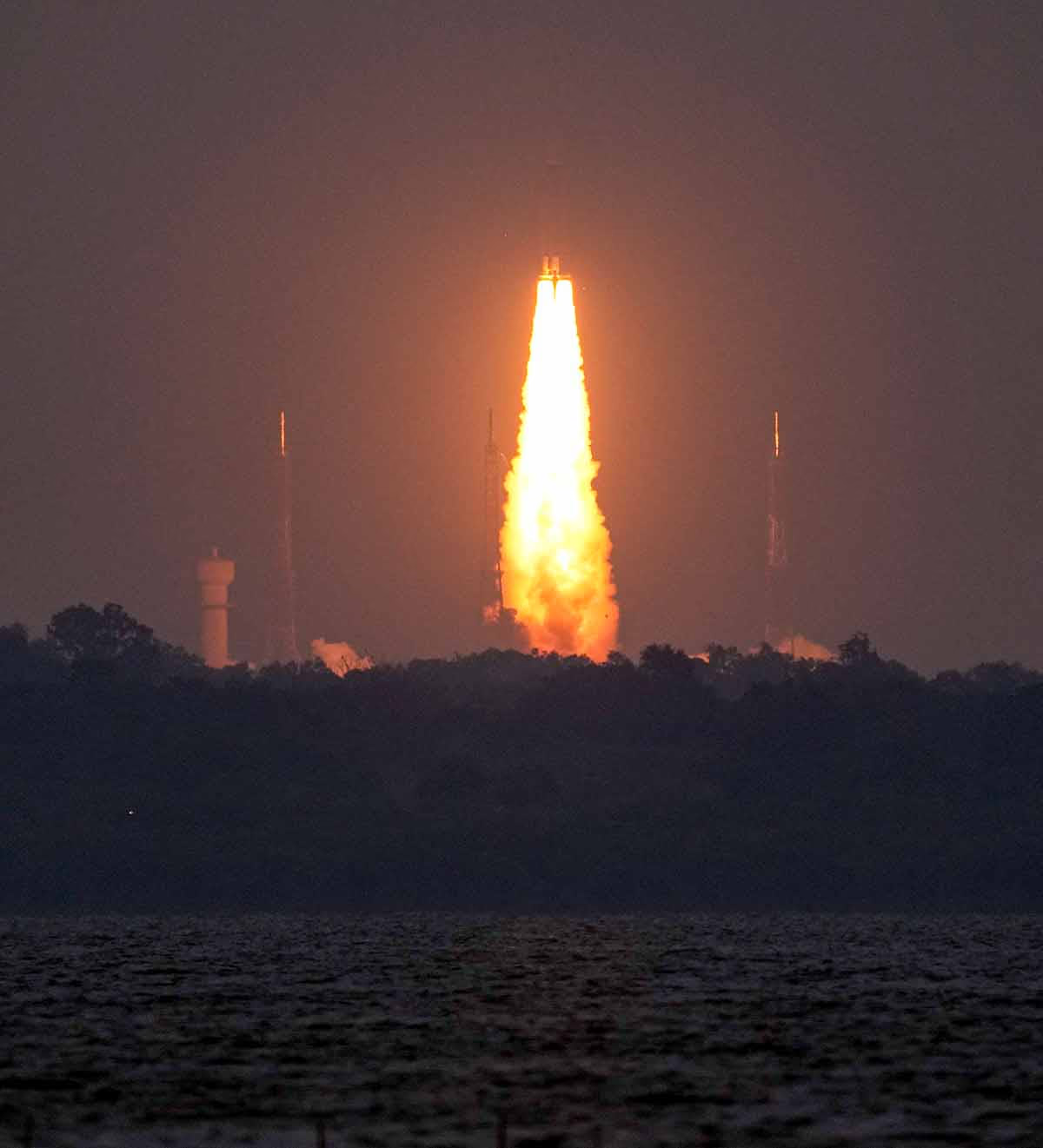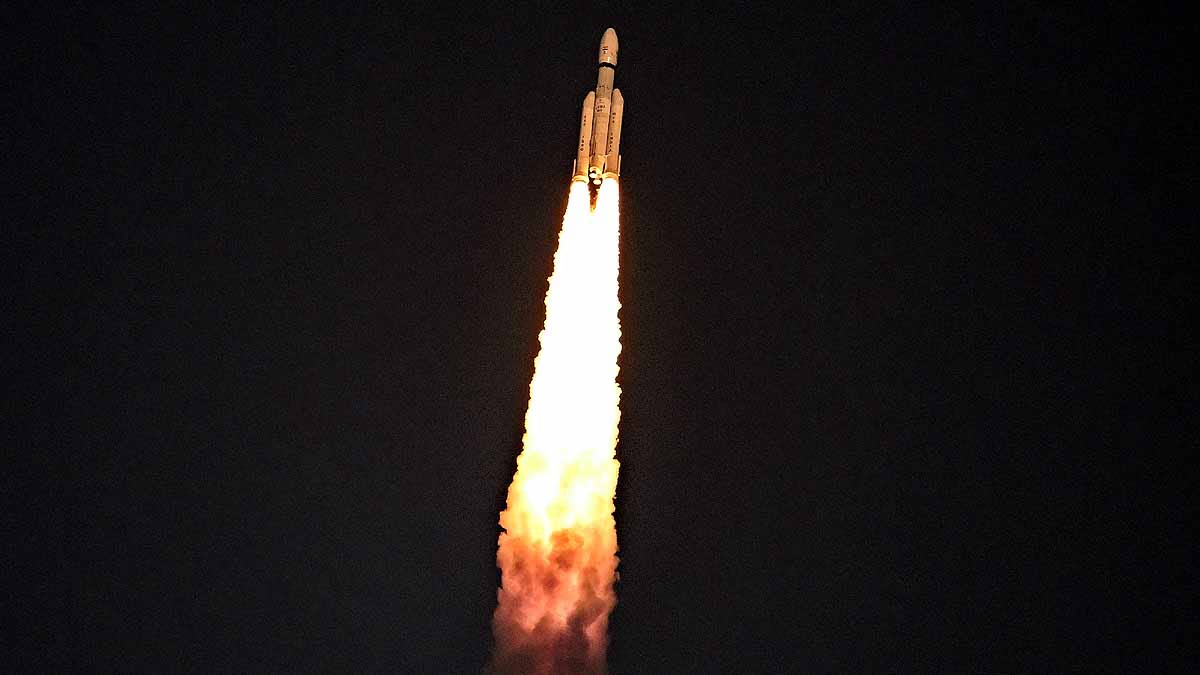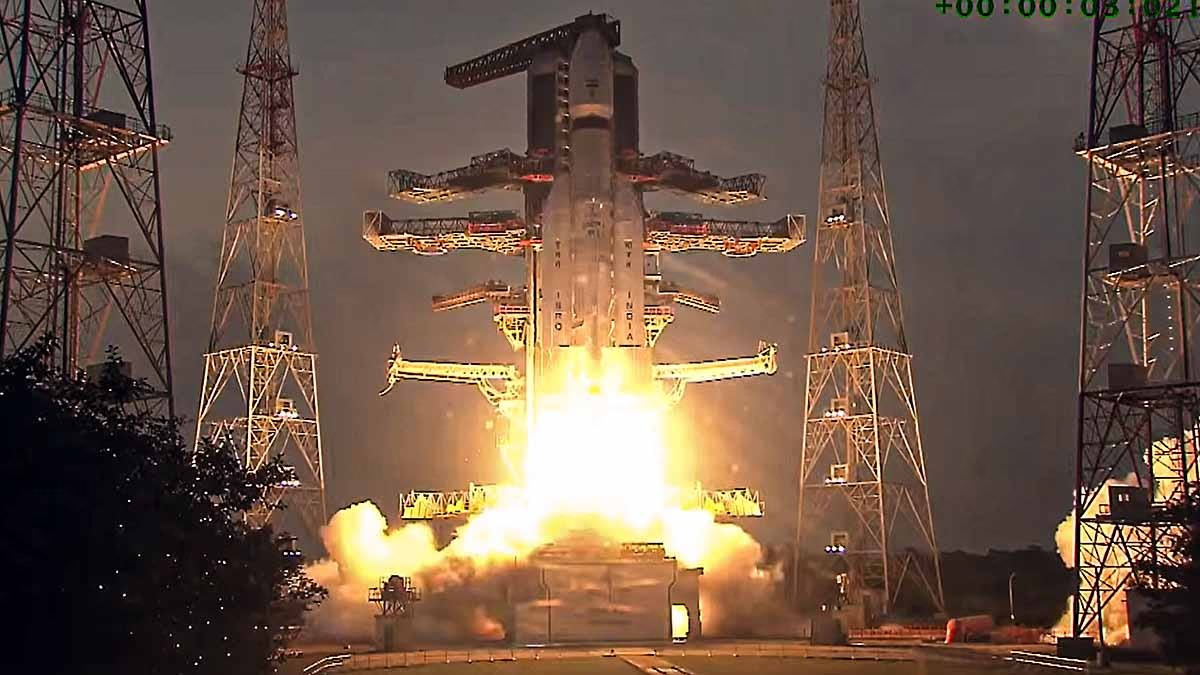In a landmark achievement for India's space journey, the Indian Space Research Organisation (ISRO) has successfully launched the CMS-03 (GSAT-7R) satellite using the LVM3-M5 rocket. The team faced unfavorable weather—dense clouds, strong winds, and a looming threat of rain—but their unwavering spirit led to victory.
Baahubali Rocket took flight at the perfect moment, precisely positioning the satellite into its designated orbit. Weighing around 4,410 kilograms, this is India's heaviest communication satellite to date, reinforcing naval communications and surveillance capabilities over maritime domains.
Don’t miss:
The scheduled launch at Satish Dhawan Space Centre, Sriharikota, faced challenges as the morning skies were gloomy. The strong winds complicated rocket launch preparations. However, ISRO scientists, armed with radar updates and weather analyses, patiently waited, seizing a brief window for launch. In just 50 minutes, the LVM3 rocket delivered the satellite to the Geosynchronous Transfer Orbit (GTO), met with applause in the control room. Celebrating its fifth consecutive success, this mission showcases ISRO's prowess.
Don’t miss:
CMS-03, known as GSAT-7R, is entirely designed and constructed in India, replacing the outdated GSAT-7 satellite.

Source: aajtak
What's its role? It strengthens signals over 70% of the Indian Ocean and the Indian mainland. Seamless communication of voice, data, and video will be possible between naval ships, aircraft, submarines, and operation centers.
Technical prowess: Featuring multi-band transponders, providing high-speed bandwidth while ensuring secure and uninterrupted connections.
A symbol of self-reliance: Comprising 100% indigenous parts, this satellite exemplifies India's unprecedented leap in space technology, reducing dependency on foreign satellites for naval needs.
It enhances maritime domain awareness, allowing continuous monitoring of hostile activities and immediate responses—an invaluable advantage in today's complex security landscape.
Don’t miss:
Post-launch, ISRO Chairman Dr. V. Narayanan addressed the media. He expressed delight, stating that despite adverse weather, LVM3 delivered a national milestone. Congratulations to India! We have capped the milestone of launching our heaviest geo-communications satellite from our own soil. Our burgeoning space sector delivers exceptional services to the navy and other users.

Source: aajtak
On the weather challenges, he acknowledged the team's determination. The scientists' relentless efforts and LVM3's credibility made it possible. This success story illustrates to the nation that challenges don't deter us. Indian navy's capabilities are now at new heights. The Chairman voiced that this mission propels India as a global space leader and inspires the youth.
Prime Minister Narendra Modi also congratulated the event via a tweet, congratulating ISRO on CMS-03’s launch. He proudly celebrated the trendsetting innovation present in our space sector, accelerating national development.
This stands as ISRO's third major achievement of 2025. Following Chandrayaan-3, this successful launch boosts India's space ambitions. Dubbed as Baahubali, LVM3 maneuvers heavyweight payloads effortlessly. Preparations continue for future missions, including NISAR and Gaganyaan. Despite weather hurdles, this victory showcases ISRO's intelligent and dedicated team. The navy chief stated that GSAT-7R will revolutionize the protection of maritime interests.




